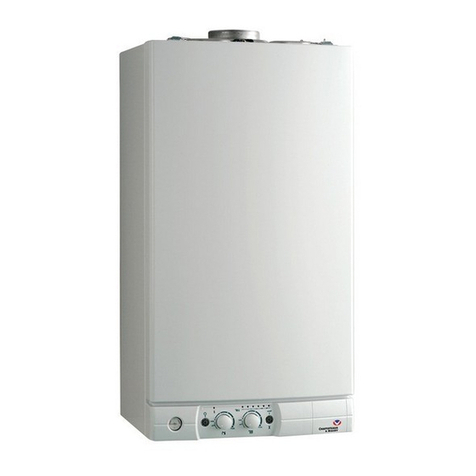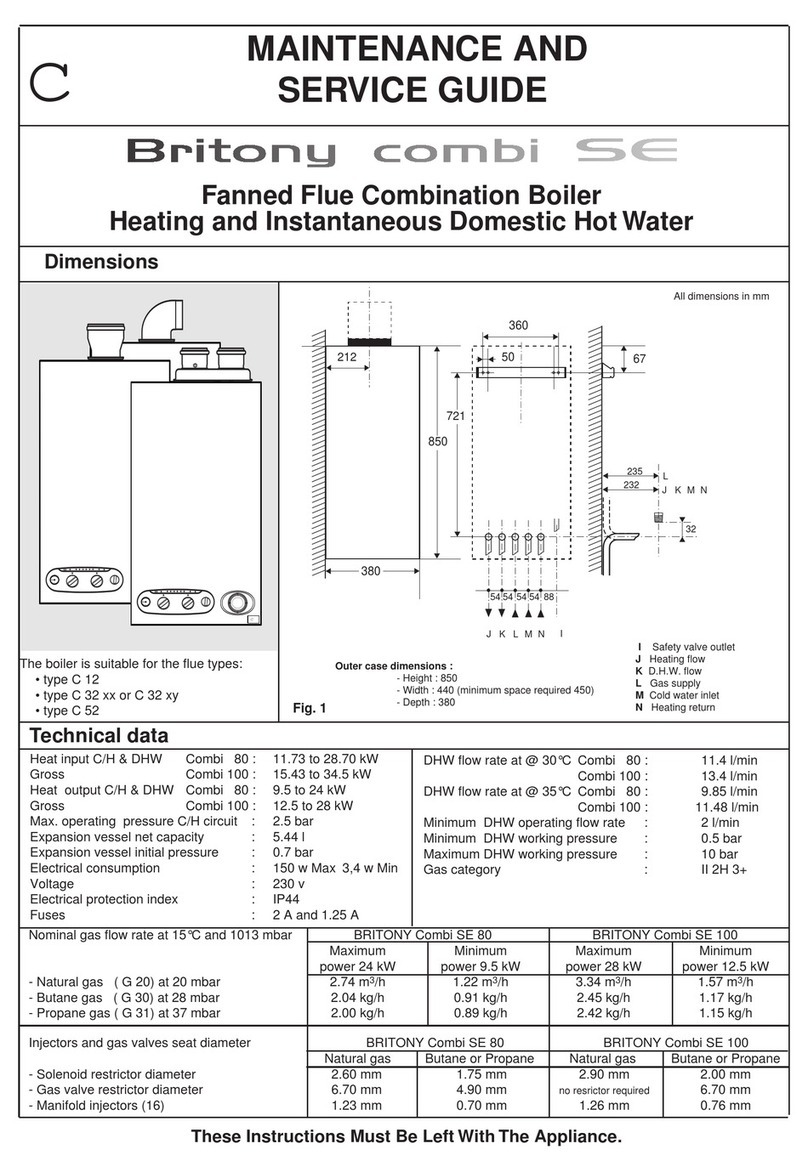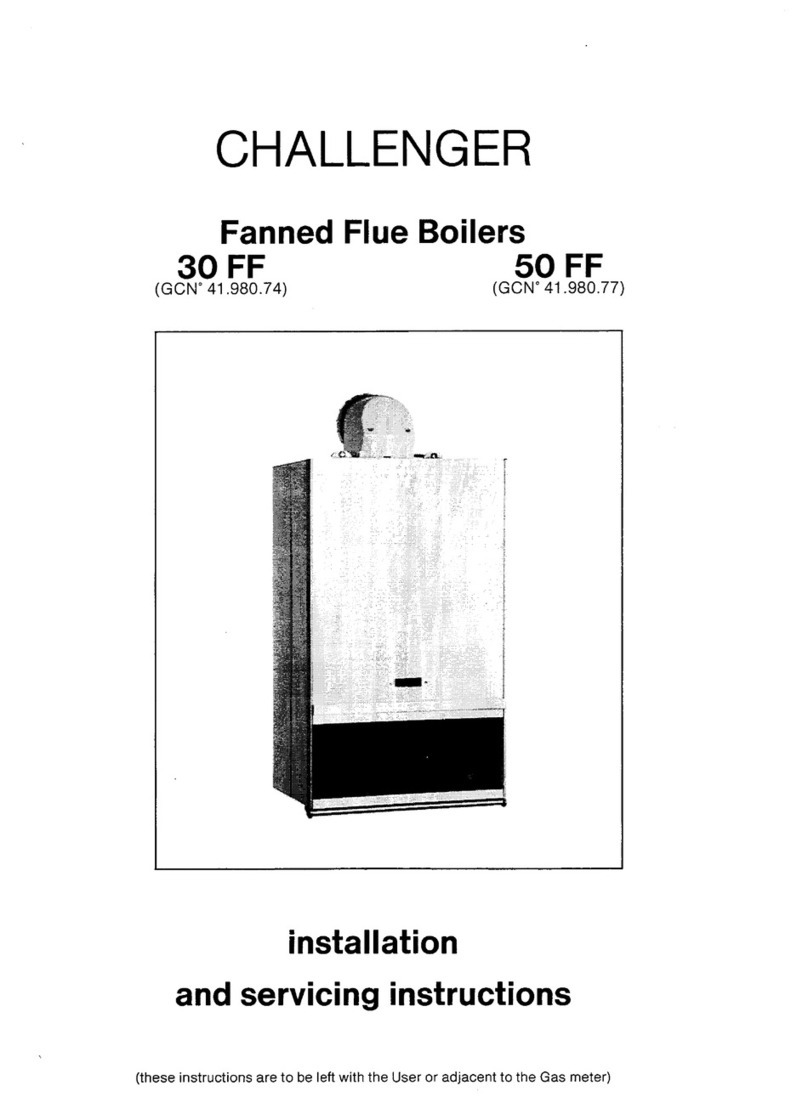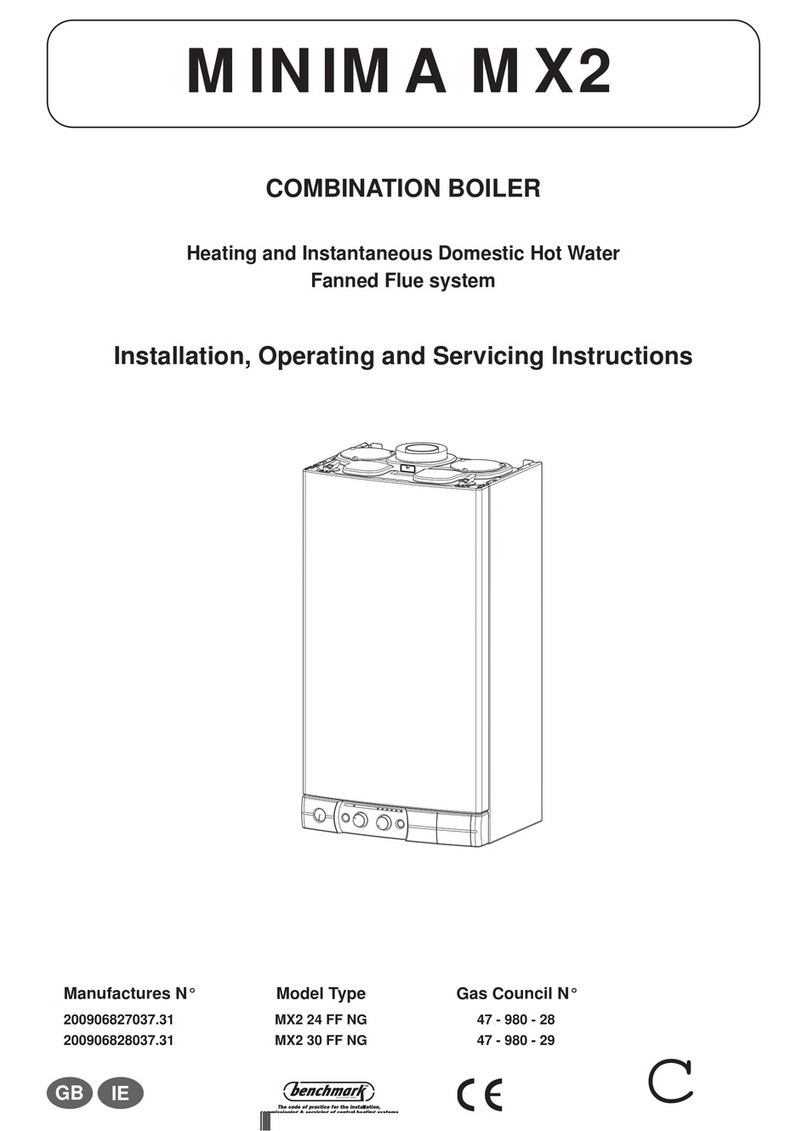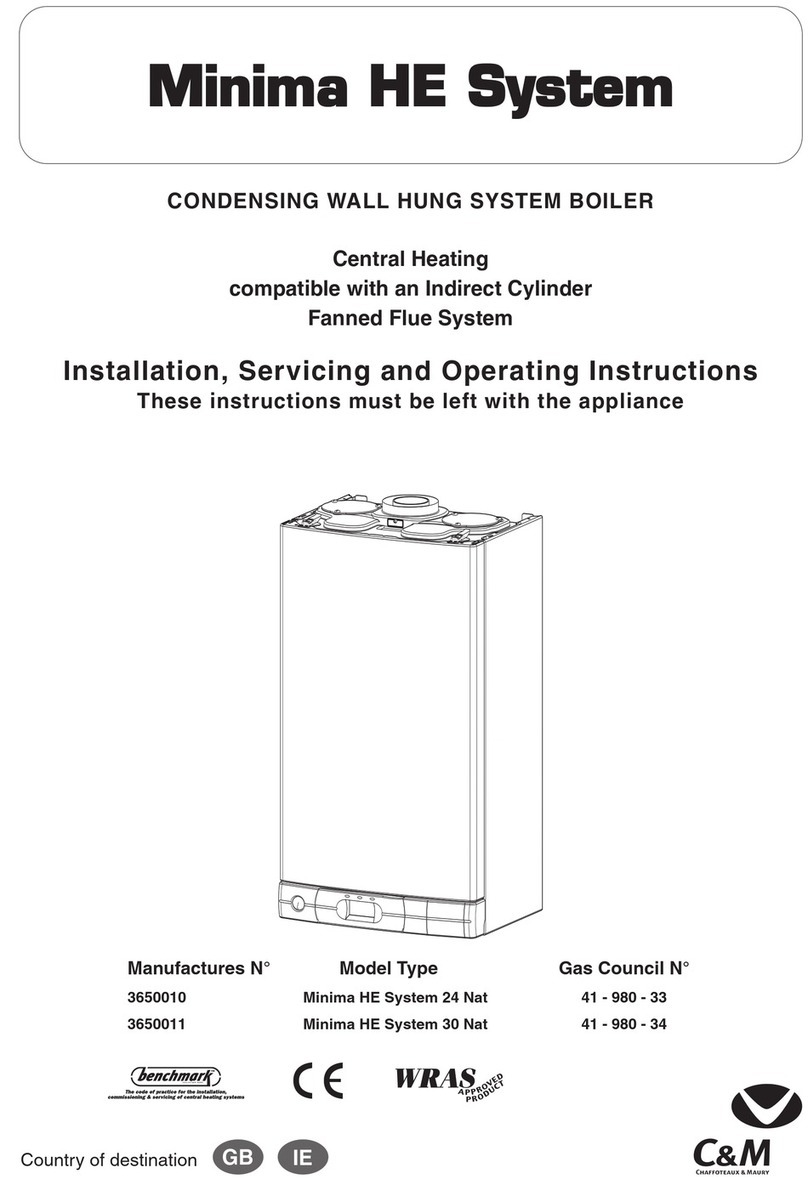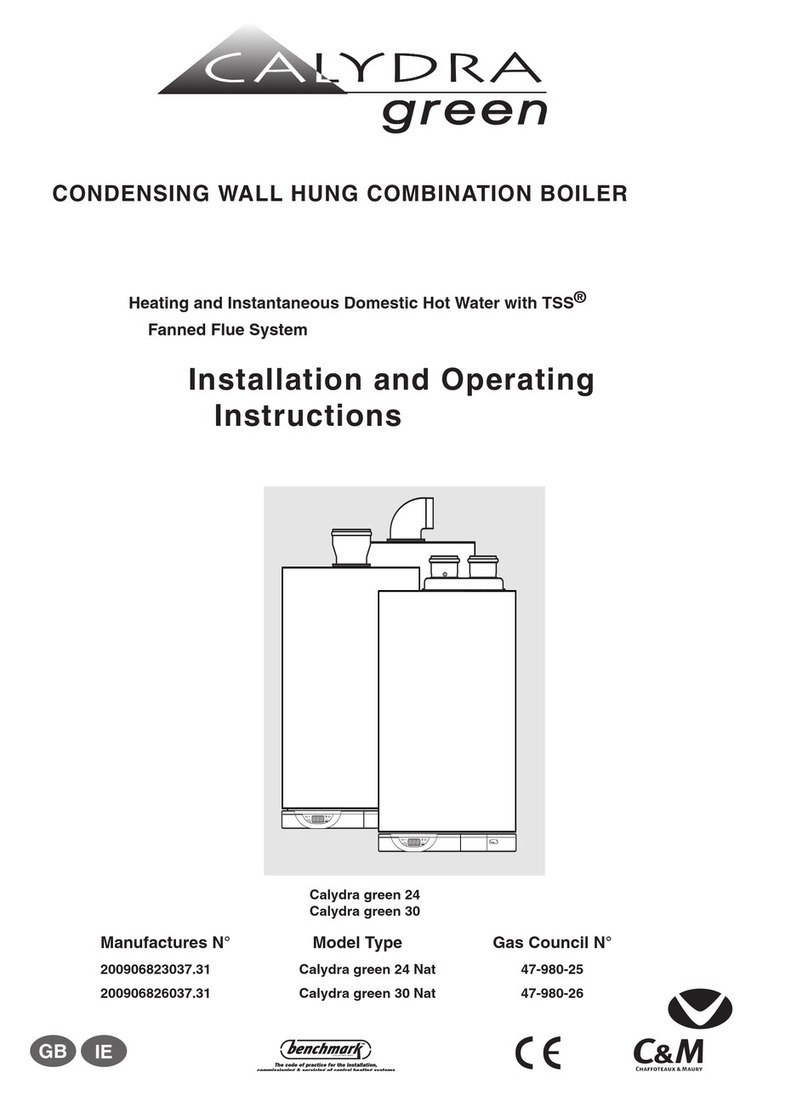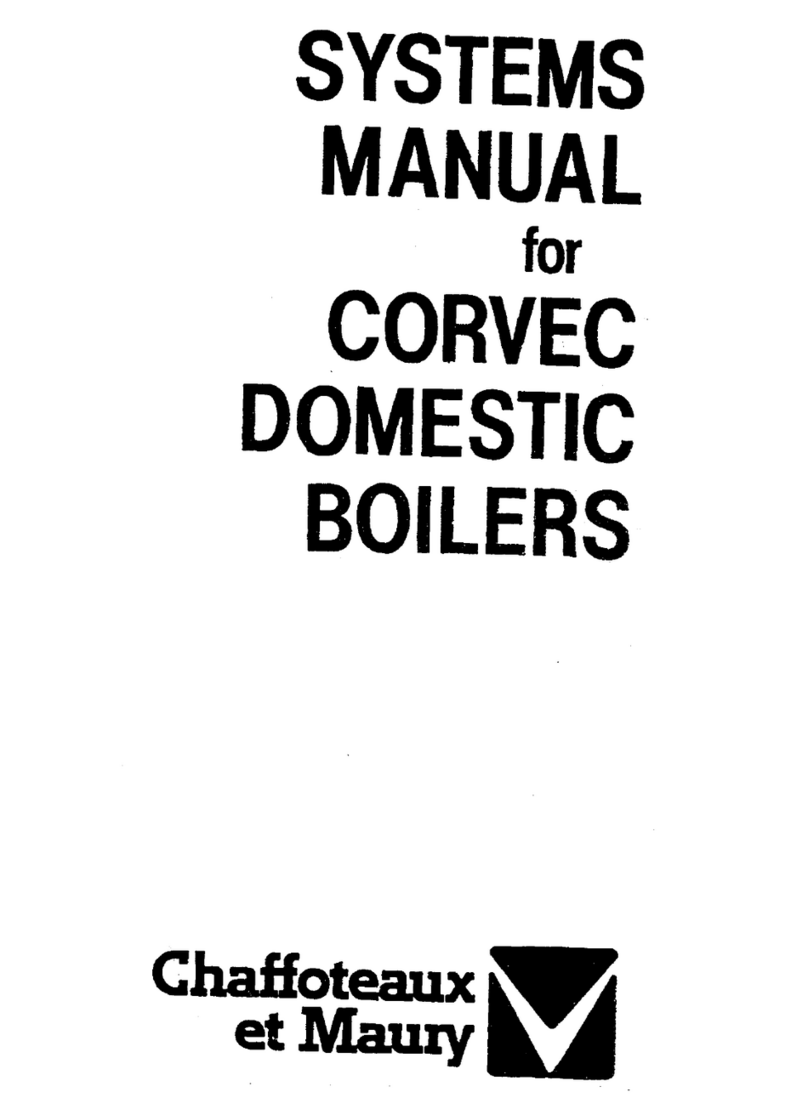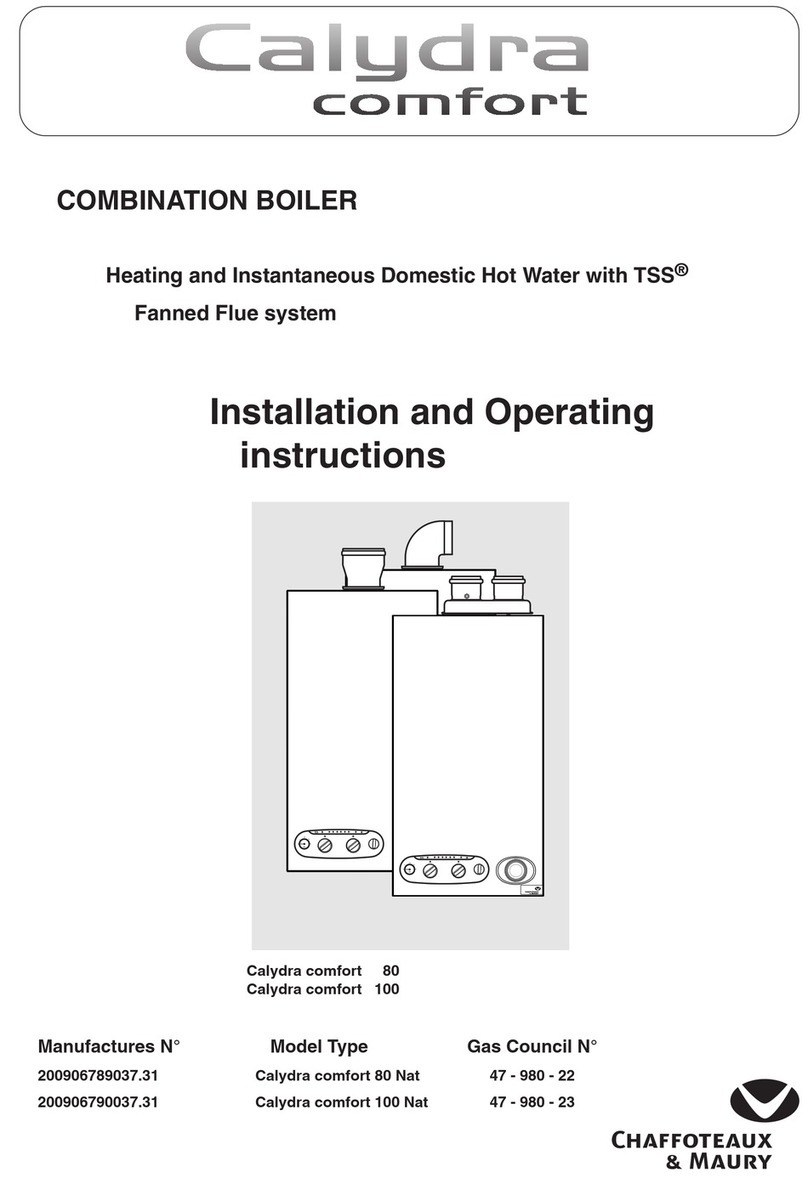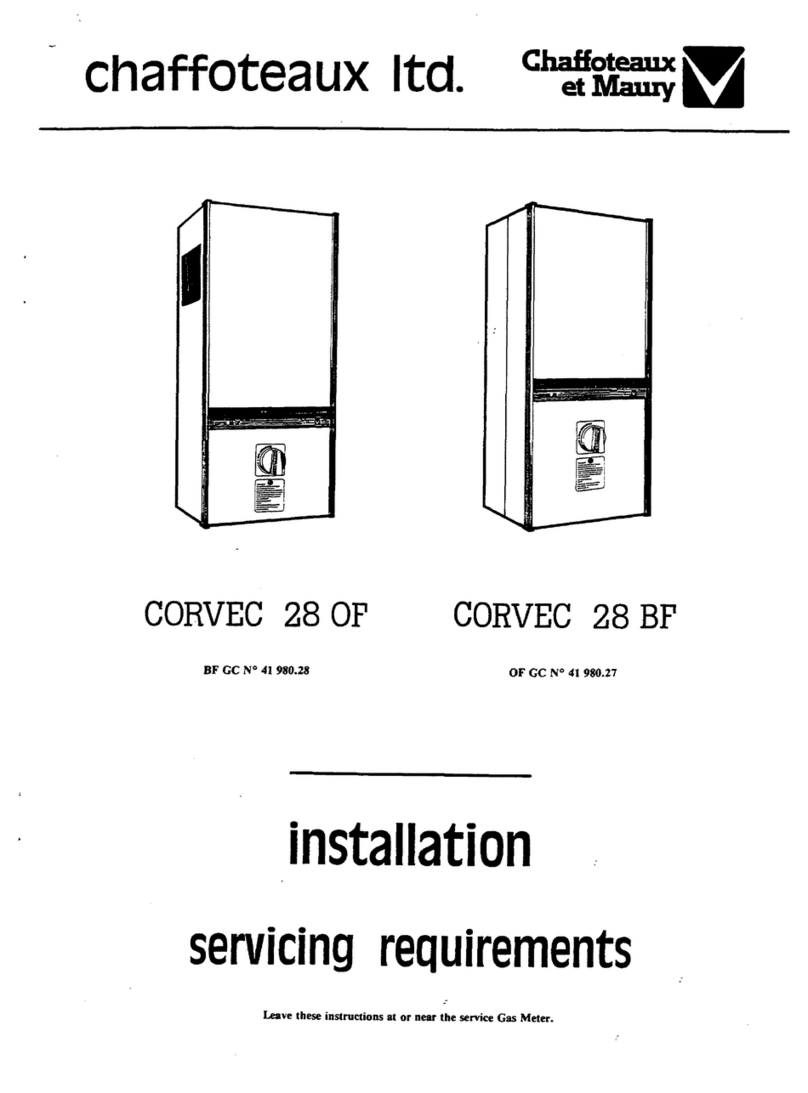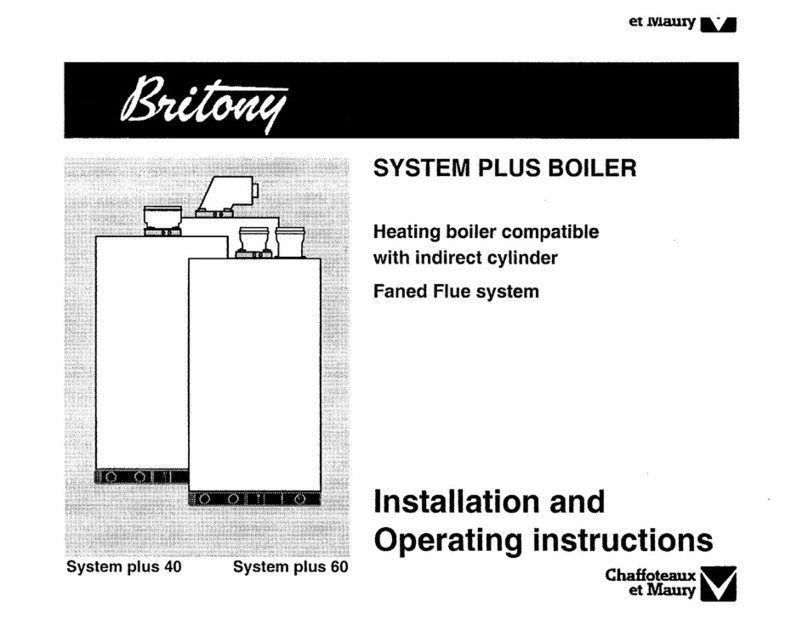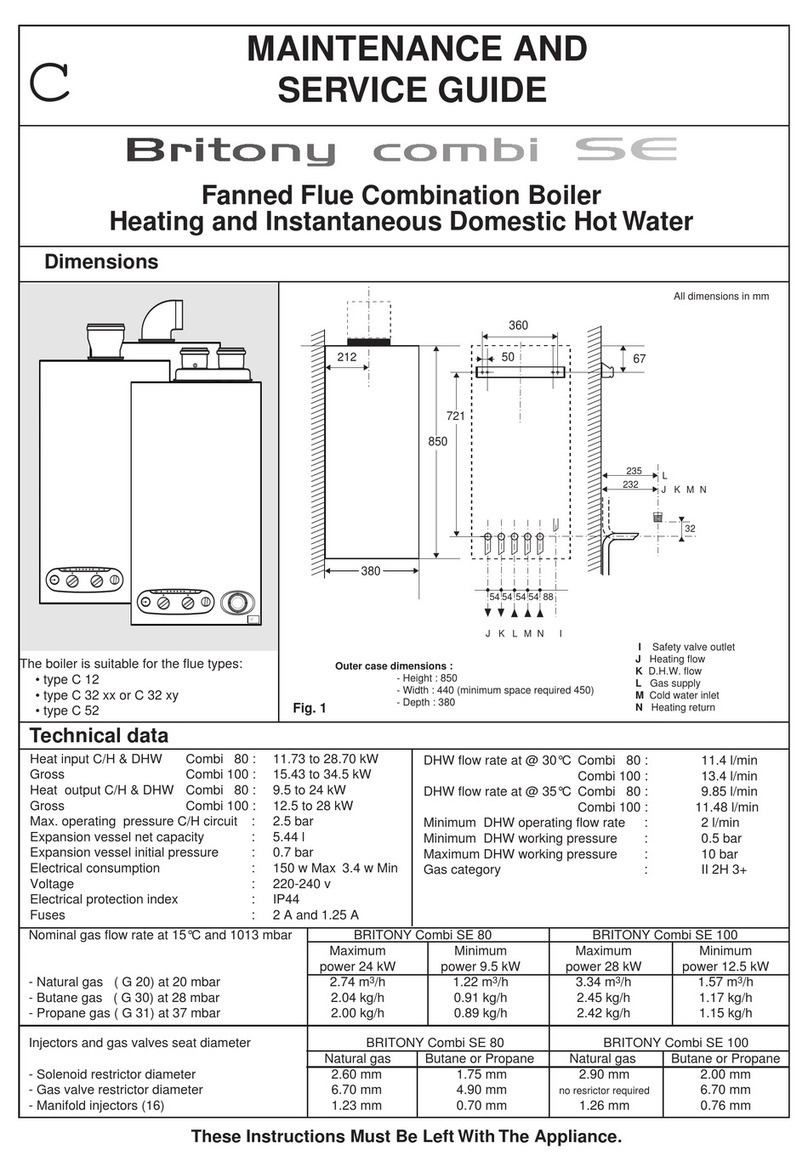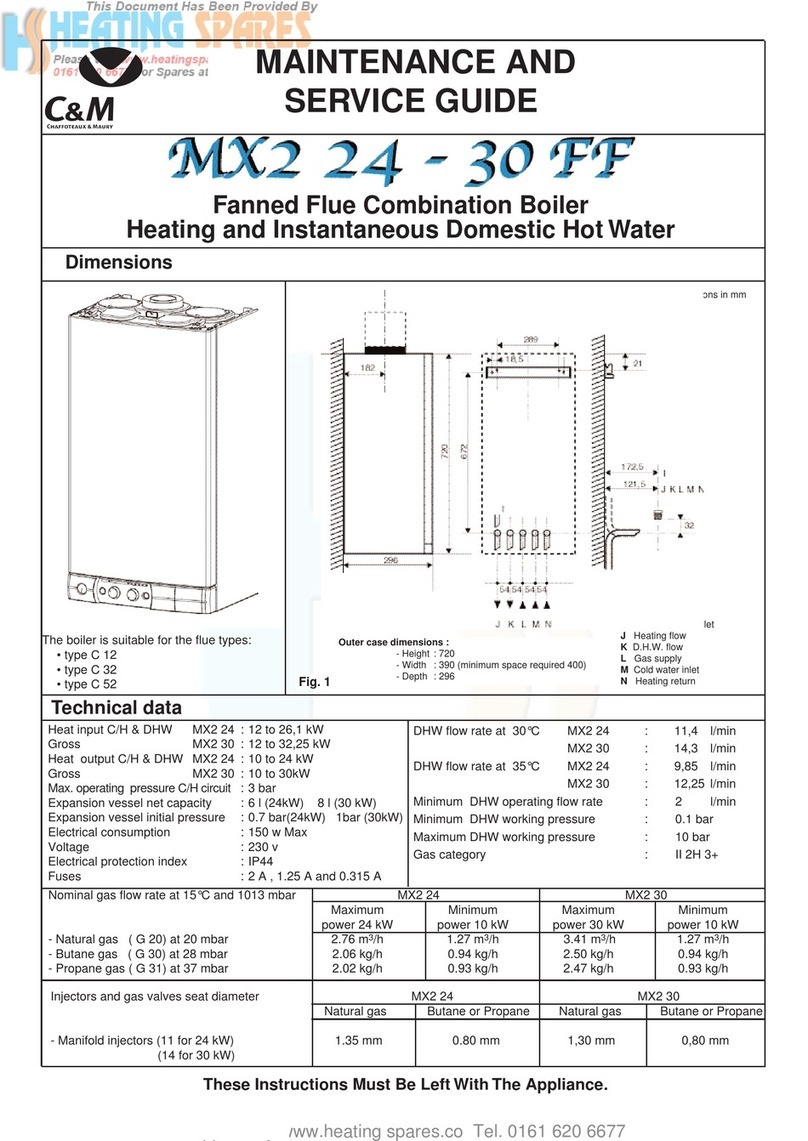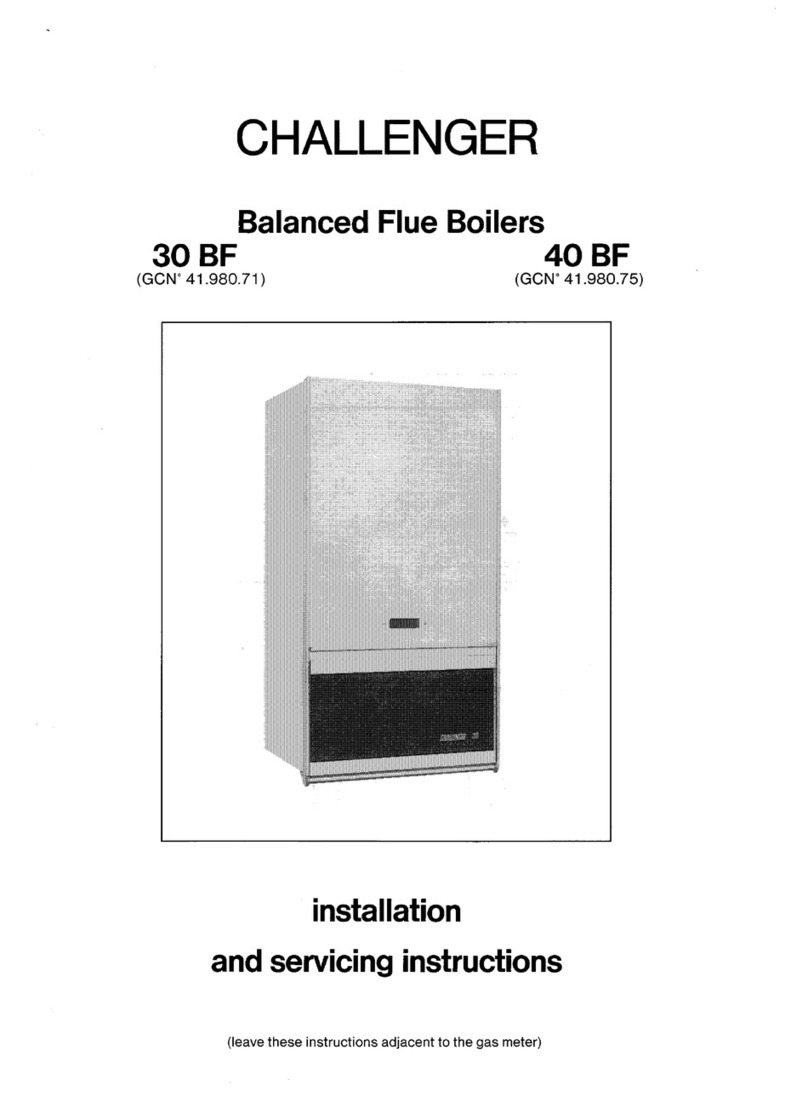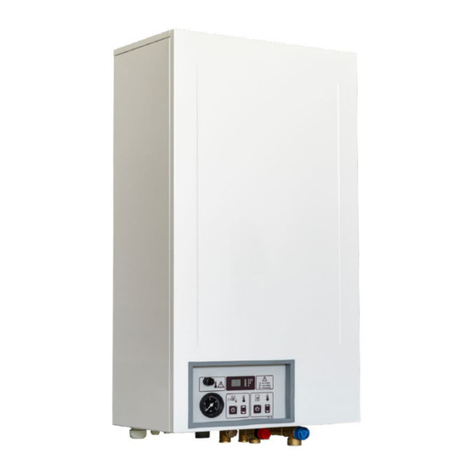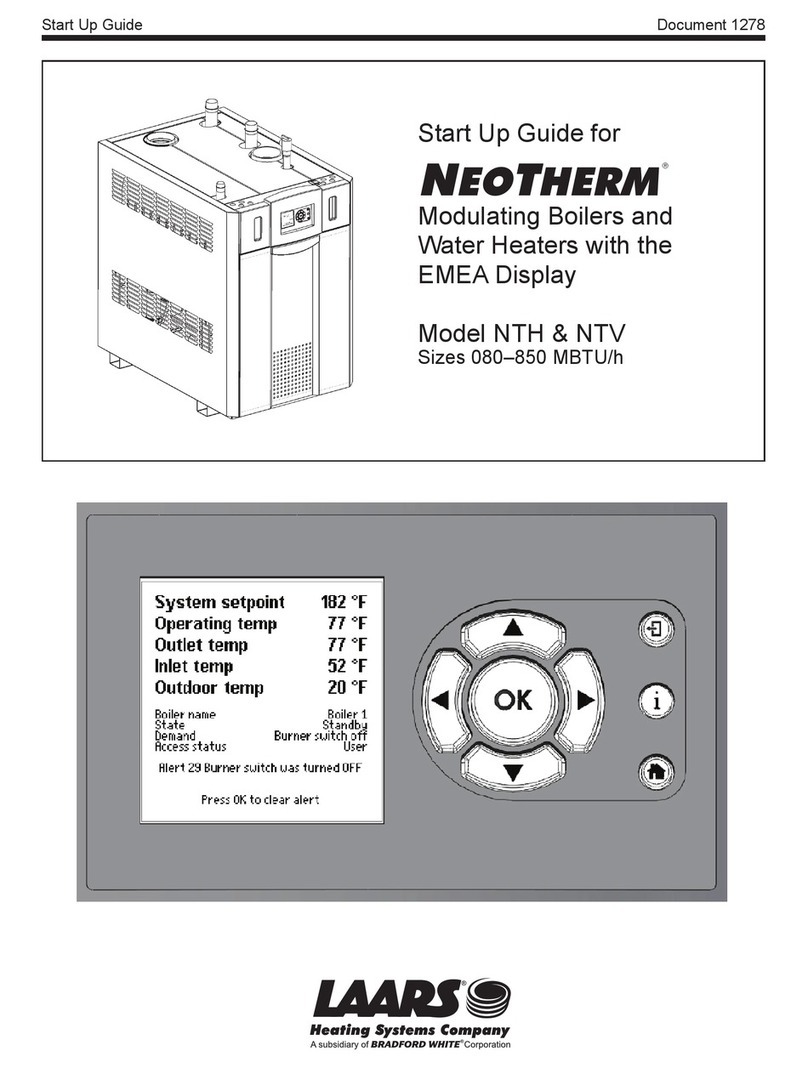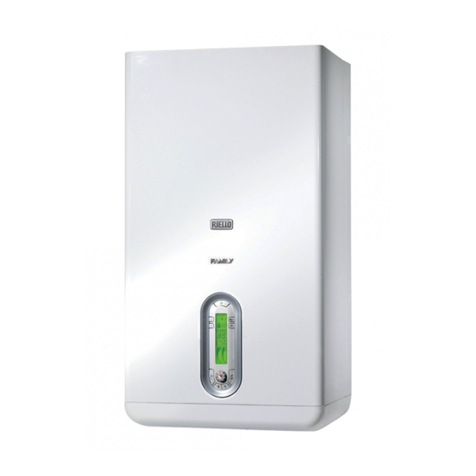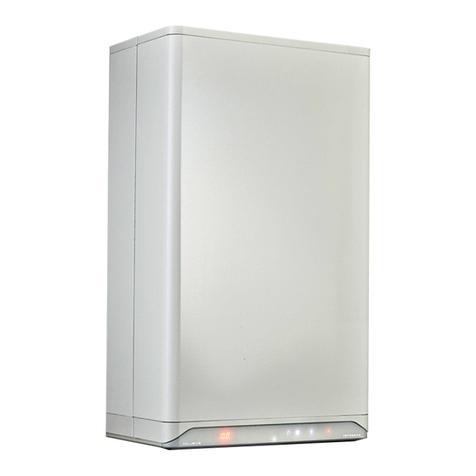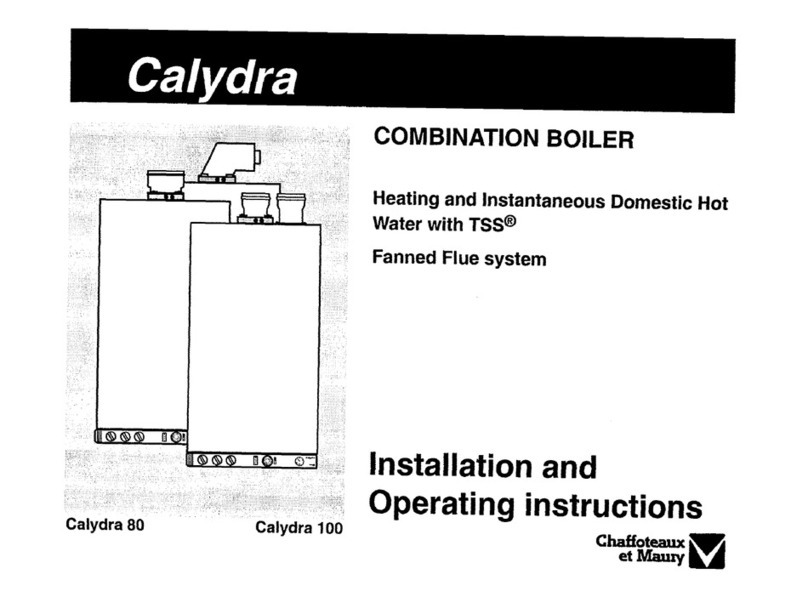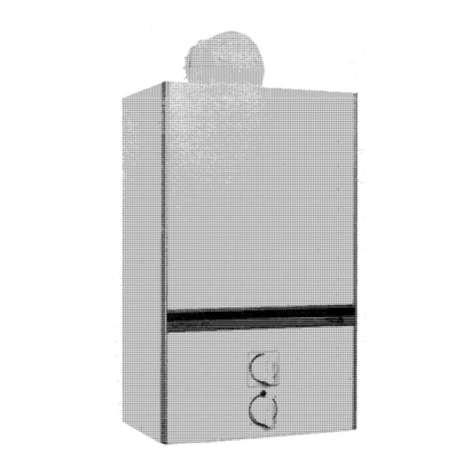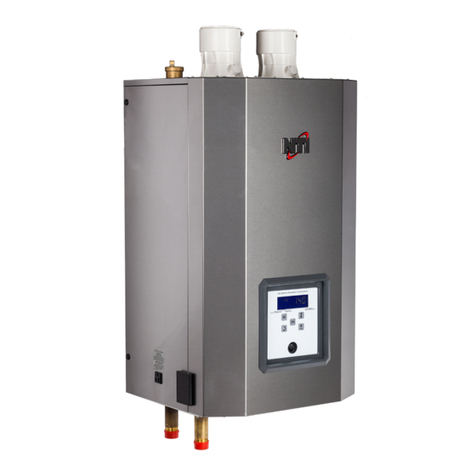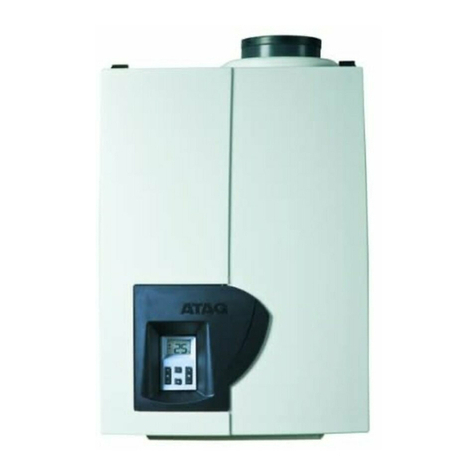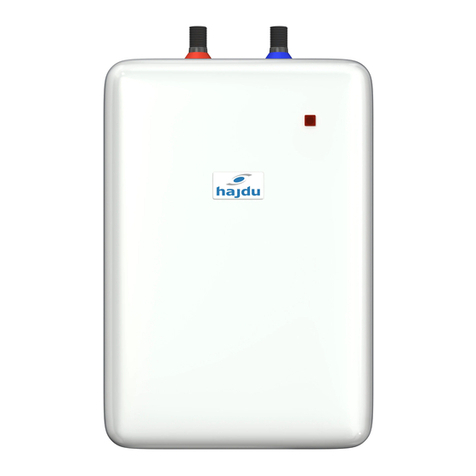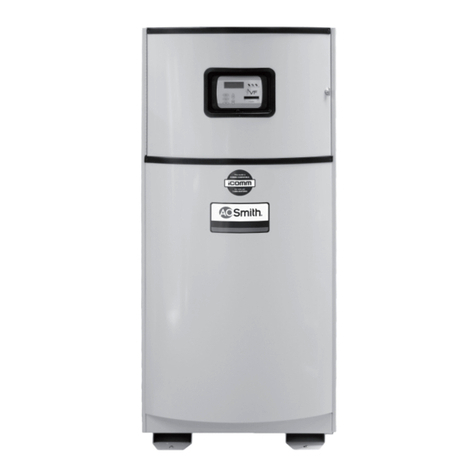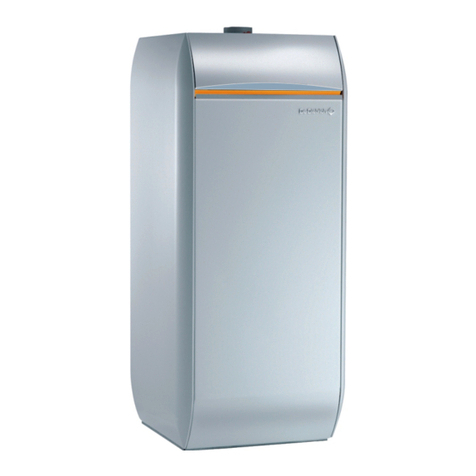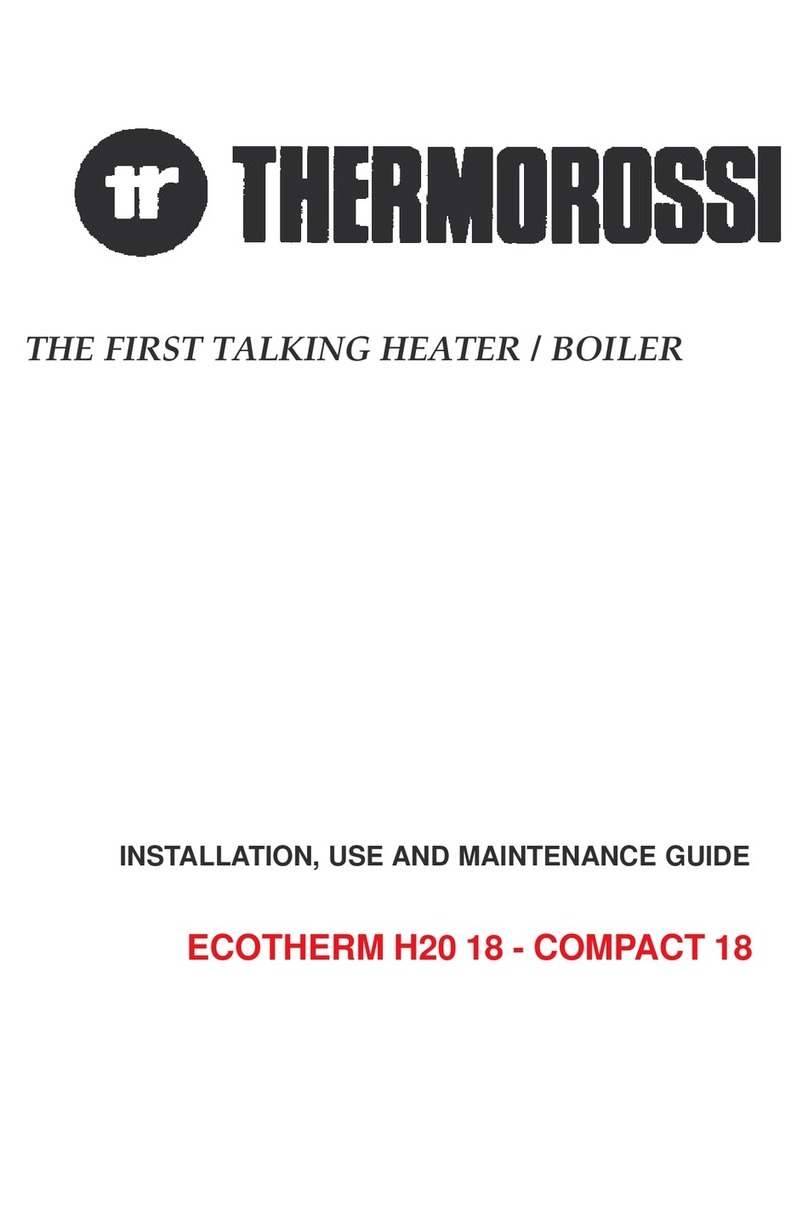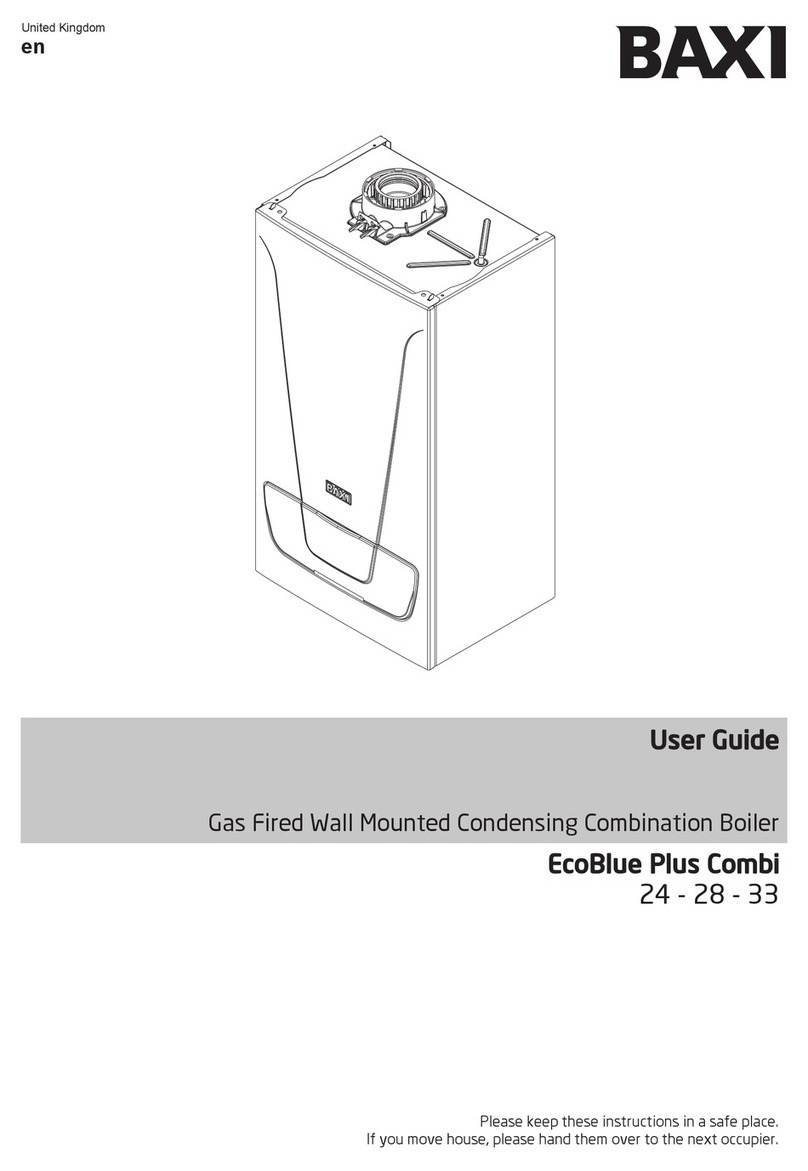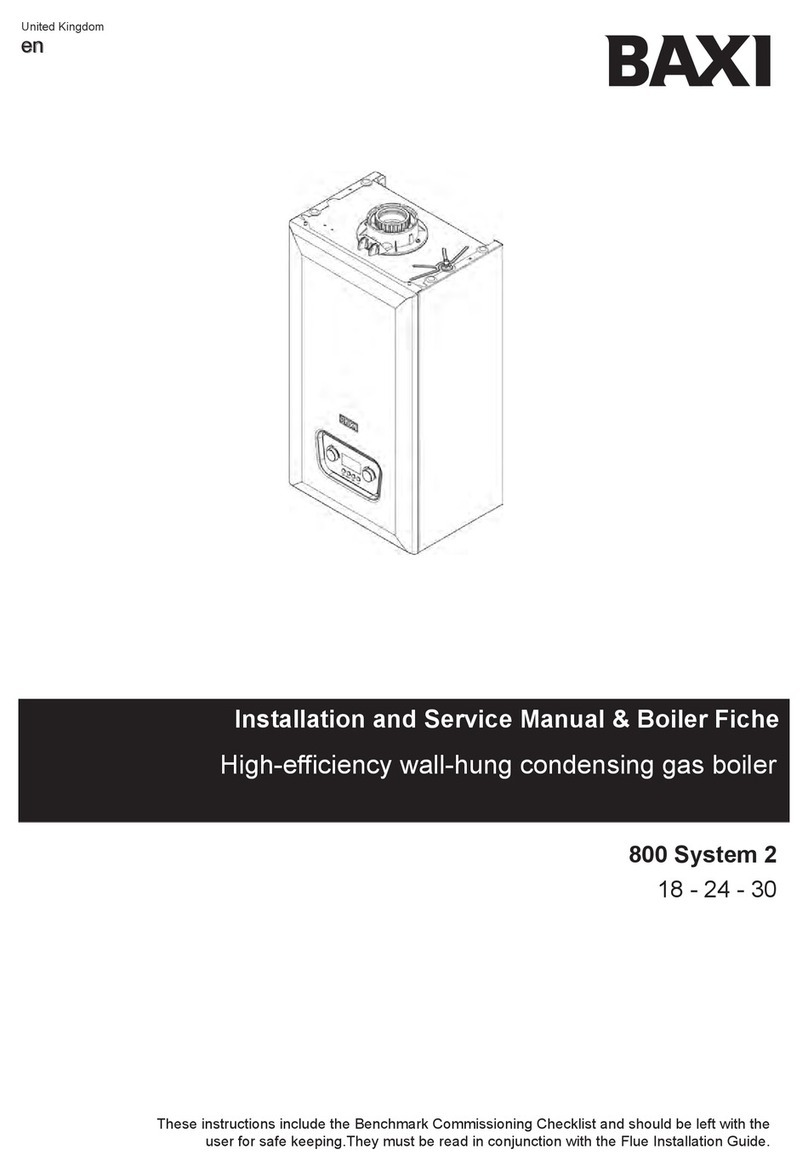it to have a permanent air vent. This vent must be either
direct to outside air or to an adjacent room or internal space
which must itself have a permanent air vent of at least the
samesizedirect to outside air.
The minimum effective area of the permanent air vent(s)
related to the maximum rated input of the boiler and shou
be 202 cm2(30.5 in2).
3. Installation requirements
3.1 General
The installation of the boiler must be in accordancewith the
Gas Safety installation and use Regulations, relevant
Building Regulations, the Byelaws of the Local Water
Undertacking, the Safety Document 635, the Electricity at
work Regulations BS 767I. It should also be in accordance
with thecfollowing British Standard Codes of Practice - BS
689l.BS7953.BS7074: I :2.BS5449: l.BSS440: I :2.
3.2 Location
The position chosen for the boiler must permit the provision
of a satisfactory flue termination and also provide adequate
spacefor servicing and air circulation around the boiler.
The boiler must not be installed in a room or internal space
containing a bath or a shower. Ena bedroom area, a bed-sit-
ting room, or a private garage.
Where installation will be in an unusual position, special
procedures may be necessary, and BS 6798, gives detailed
guidance on this aspect.
A cupboard or compartment used to enclose the boiler must
be designed and constructed specifically for this purpose. An
existing cupboard or compartment may be used provided
that it is modified for the purpose.
Details of essential features of cupboard/compartment
design, including airing cupboard installations are given in
BS 6798.
3.3 Gas supply
The gas installation should be in accordance with BS 689 1.
The meter to be used must be of adequate capacity to meet
the total gas load. i.e. boiler plus other gas appliances.
Ensure that the pipework from the meter to the boiler is of
adequate size. Do not use pipes of a smaller size than the
boiler gasconnection.
The complete installation must be tested for soundness as
described in the above standard.
3.4 Flueing
Detailed recommendations for flueing are given in BS 5440 :
Part 1.
The following notes are for general guidance only :-
3.4.1 The boiler should be sited such that the maximum pos-
sible length of the flue system can be contained within the
building and that the route of the flue rises continuously to
the terminal and is asdirect aspracticable.
The first 600 mm (2 ft) of flue pipe should rise vertically from
the draught diverter connection before the use of any bends
or elbows.
Horizontal or shallow angle runs, right angled bends and
mitred elbows should beavoided.
Where an existing brick chimney is to be used it should be
swept thoroughly before connection of the new boiler, and
the chimney should be lined. The boiler can be used with
fanned or fan diluted flues.
An approved British Gas terminal must be fitted and the
terminal sited at not lessthan 600 mm (2 ft) above the roof
edge,and, where possible, above the ridge line. The flue must
not be terminated at or adjacent to a wall face (except for fan
diluted flues).
3.5 Air supply
Detailed recommendations for air supply are given in BS
5440: 2.
The following notes are intended to give general guidance.
3.5.1 Room or internal spaceair supply
Where the boiler is to be installed in a room or internal space,
the boiler requires the room or internal space containing
3.5.2 Cupboard or compartment air supply
Where the boiler is to be installed in a cupboard or compart-
ment permanent air vents are required (for combustion, flue
dilution and cooling purposes) in the cupboard or compart-
ment at high and low level. These air vents must either
communicate with a room or internal space or be direct to
outside air.
The minimum effective areas of the permanent air vents
required in the cupboard or compartment are specified below
and are related to the maximum rated heat input of the
boiler.
POSITION AIR VENT AREAS
AIR OVFENTS
Air from room Air direct from
or internal space
outside
High
Level 468cm’ (72.5in’) 234cm’ (36 in’)
Low
Level 936cm? (14.5in’) 468cm’ (72.5ir
Note : Both air vents must communicate with the sameroom
or internal space or must both be on the same wall to outsi-
de air.
Where cupboard or compartment air vents communicate
with a room or internal space, the room or internal space
must itself have a permanent air vent(s) as specified above
(3.5. I).
3.5.3 Effect of an extract fan
If there is any type of extract fan fitted in the premises, there
is a possibility that if adequate air inlet area from outside is
not provided, spillage of the products from the boiler flue
could occur, when the extract fan is in operation. Where such
installations occur, a spillage test asdetailed in BS 5440 : I :
must be carried out and ventilation requirement to BS
5440 : 2.
3.6 Water circulation systems
Open or sealed type central heating systems should be in
accordance with the relevant recommendations given in BS
5376 : 2, BS 5449 : 1(for small bore or microbore systeme‘
Hot water systems should be in accordance with the relev.
recommendations given in BS 5449 and BS 5546.
3.7 Electrical supply
This appliance must be earthed. All wiring must conform to
the BS 7671. The Flexiflame 140 requires a 240 V, single
phase,50 Hz supply. The boiler should be connected to the
mains via a fused double pole switch or via a 13 amp.
socketoutlet in conjunction with a fused plug. The fuse rating
should be 3 amp.
The point of connection to the mains should be readily acces-
sible and adjacent to the boiler.
The supply chord must be 0.75 mm2 three core heat resisting
cable.
4. Installation of boiler
4.1 General
The wall on which the boiler is sited must be capable of
adequately supporting the weight of the boiler and any ancil-
lary equipment and should be non-combustible.
A vertical flat area is required for the boiler asfollows :
Wide 900 mm 36 ins
High 1185mm 47 ins.
Above dimensions include the necessary clearances around
the boiler for caseremoval and for air movement.
3
















